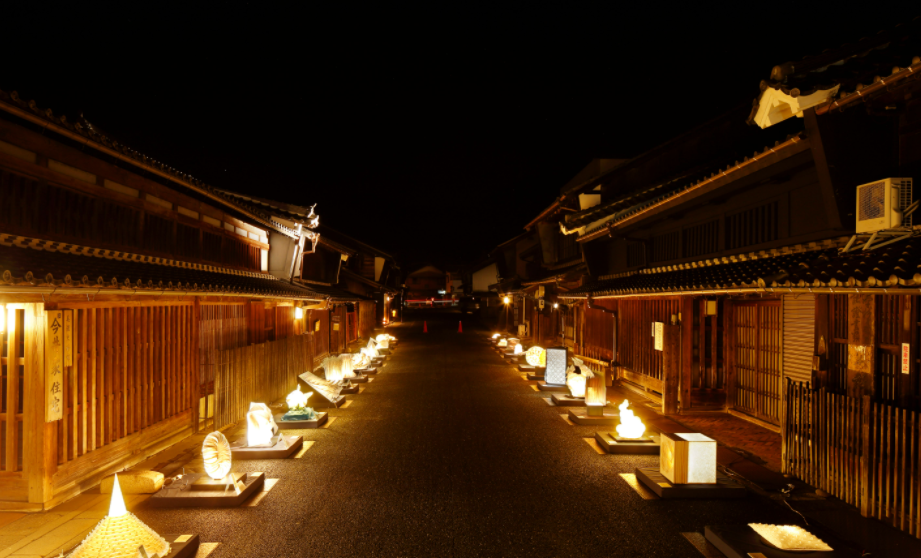LONDON, 2021-Mar-05 — /Travel PR News/ —Gifu and Ishikawa are steeped in centuries of history and tradition. Great warlords have risen and fallen there with their fates steering the course of Japanese history. Traditional streetscapes have survived in towns where the past and present are inseparable. Arts and crafts have long flourished in both prefectures with Gifu being home to Seki blades, Mino washi (Japanese paper), Hida woodworking, Mino ware (pottery), indigo dyeing and other crafts that have been passed down through generations of artisans. Whilst Ishikawa is renowned for its lacquerware production, lantern floats and numerous museums. See our guide to the top crafts and museums in Gifu and Ishikawa.
GIFU
Mino Washi: 1,300 Years of Paper Making
Paper making has been documented in southern Gifu as far back as the 700s, thirteen hundred years on, Mino washi paper is regarded as some of the finest in Japan and has been recognised internationally. Made in its most traditional form with kozo mulberry and clear water from the Nagara River, Mino washi today has many uses. The paper’s resilience and its aesthetic beauty has seen it be applied to all sorts, from scroll printing, sliding screen doors and fans to business card cases, lamp shades and even clothing. Visit Gifu’s Mino Washi Museum to learn more and have a go at making your own washi. To see how it is made click here.
The Art of Hida Woodcraft
Since the 700s, the Hida region in northern Gifu has had a reputation for wood crafting. Hida’s woodcrafters built temples and shrines that the old Hida Province was exempted from paying taxes in return for dispatching a group of woodcrafters to the then-capital Nara. Today, ornate carvings can be seen on the floats at many of Gifu’s festivals and in the traditional wooden buildings in Takayama’s old town. Visitors to the region can see it in the handicrafts on sale at Takayama’s Miyagawa morning market and in craft shops.
Mino Ware: Japan’s Most Widespread Form of Ceramics
Of all Gifu’s rich and varied crafts, none have had an impact on Japan like Mino ware ceramics. Born more than 1,300 years ago, Mino ware now accounts for more than 50 percent of all ceramics made in Japan. There are many different finishes to Mino ware including; the black finish of Setoguro, the light reddish tones of Shino and the green-hued Oribe, which takes its name from 16th-century samurai and tea ceremony master Furuta Oribe. At workshops around southeastern Gifu, visitors can try making their own version of Mino ware, or stop by kilns to learn about the varying approaches artisans take to their craft. View how Mino Ware is made here.
ISHIKAWA
Lantern Floats at the Wajima Kiriko Art Museum
The Wajima Kiriko Art Museum displays the towering kiriko lanterns that are carried in processions during summer festivals on the Noto Peninsula. The collection includes lanterns up to 15 meters tall. The museum recreates the festival mood with traditional music, glowing lanterns and projections of festival footage. In the summer, there are daily performances of gojinjo taiko, a style of theatrical drumming native to Wajima, at 8:30 p.m. on the outdoor stage. Learn more and get a feel for the festival here.
The Japan Origami Museum
The Japan Origami Museum is the world’s largest museum dedicated to the nearly 400-year-old art of folded paper. The museum exhibits 100,000 works, including many that won prestigious awards in origami competitions. Additionally, the museum holds the world’s smallest paper crane, which is smaller than the tip of a human hair. Whilst you can’t visit the museum why not have a go at home.
Contemporary Art showcased at the Oku-Noto Triennale
The Oku-Noto Triennale art festival takes place every three years in Suzu, a remote city on the farthest tip of the Noto Peninsula. The festival sets contemporary art installations against a backdrop of untouched nature, ocean views, rice terraces and salt farms. Local residents provide tours and lectures that bridge the gap between contemporary art and the area’s deep-rooted heritage. Due to the Covid-19 pandemic, the 2020 triennale was postponed and is now due to take place from 4th September – 24th October 2021. For more information, see here.
For more information Visit Gifu and Travel Ishikawa.

